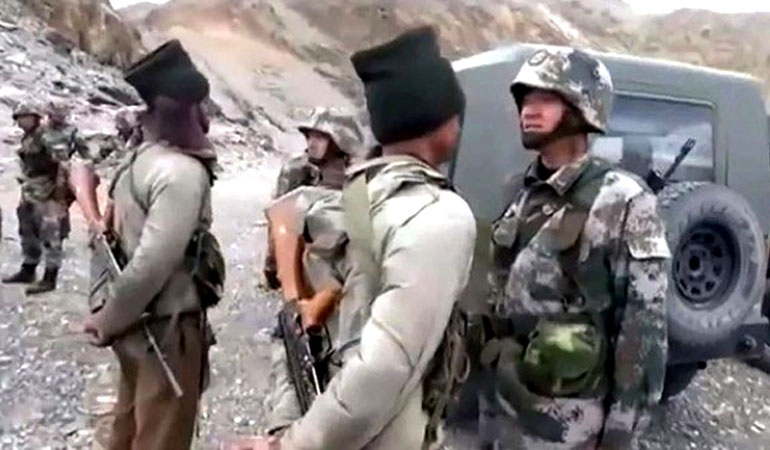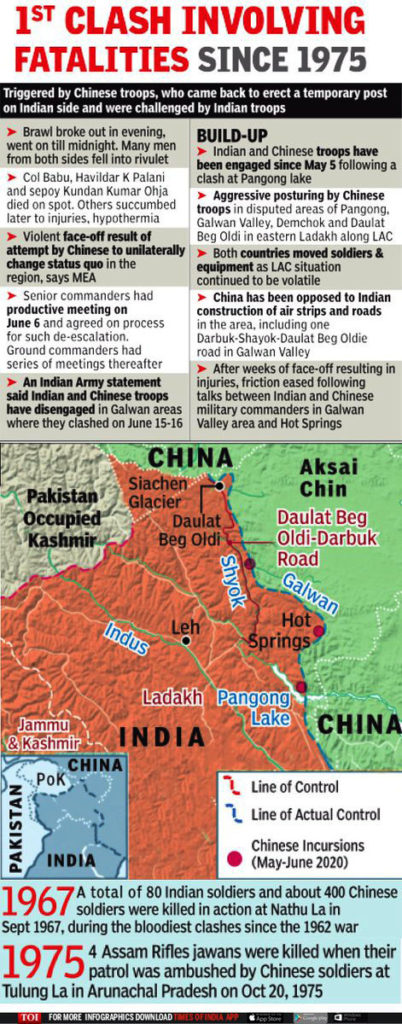
(TibetanReview.net, Jun17’20) – The number of Indian soldiers, including an officer, who died following the Jun 15-16 night skirmish at Galwan Valley of Ladakh has risen to 20 after 17 more succumbed to their injuries. China has admitted casualties but not divulged figures. Indian intercepts were reported as saying the dead and seriously injured on the Chinese side totaled 43 while US intelligence was cited as saying this number was 35.
The Indian Army said in a statement Jun 16: “Indian and Chinese troops have disengaged at the Galwan area where they had earlier clashed on the night of 15-16 June. 17 Indian troops who were critically injured in the line of duty at the stand-off location and exposed to sub-zero temperatures in the high altitude terrain have succumbed to their injuries, taking the total that were killed in action to 20.”
India’s Foreign ministry spokesman Anurag Srivastava said the clash arose from “an attempt by the Chinese side to unilaterally change the status quo” on the border while China accused India of crossing the border onto its occupied Tibet side.
China was the first to issue a statement on to the clash. Its foreign ministry said in a statement Jun 15 evening: “Indian troops on Monday (Jun 15) seriously violated the consensus of the two sides by illegally crossing the border twice and carrying out provocative attacks on Chinese soldiers, resulting in serious physical clashes.”
Further, the Chinese foreign ministry said, “China has lodged solemn representations with the Indian side and urged it to strictly restrain its frontline troops from crossing the border or taking any unilateral action that may complicate the border situation.”
India has accused China of reneging on the agreement on disengagement reached on Jun 6.
***
The fighting at Galwan began after troops under Colonel Santosh Babu’s command dismantled a Chinese tent sent up near a position code-named Patrol Point 14, close to the mouth of the Galwan river following a meeting between Lieutenant General Harinder Singh, who commands the Leh-based XIV Corps, and Major-General Lin Liu, the head of the Xinjiang military district.
However, within two days of that disengagement agreement reached at Chushul, the Chinese PLA set up a fresh tent at Patrol Point 14, inside territory claimed by India, and refused to vacate it. This prompted the Indian side to burn it down on Jun 14, which led to a stone-pelting incident.
Furious hand-to-hand fighting ensued in a Jun 15 night attack by the Chinese on an unsuspecting Indian side and it continued across the Galwan river valley for over eight hours. The People’s Liberation Army assault teams had come armed with iron rods as well as batons wrapped in barbed wire and they hunted down and slaughtered troops of India’s 16 Bihar Regiment, news18.com Jun 17 cited a senior Indian government official familiar with the debriefing of survivors at hospitals in Leh as saying.
“Even unarmed men who fled into the hillsides were hunted down and killed,” one officer was quoted as saying. “The dead include men who jumped into the Galwan river in a desperate effort to escape.”
Some Indian soldiers fought back using the improvised weapons carried by the PLA; but most had no means of defence.
The report cited Indian government sources as saying that at least another two dozen soldiers were battling life-threatening injuries, and over 110 had needed treatment. “The toll will likely go up,” a military officer was quoted as saying.
***
On the Chinese side, the hawkish party international mouthpiece globaltimes.cn said in a provocative commentary Jun 17: “The clash in the Galwan Valley this time has led to casualties on both sides, indicating China-India border tensions, amid constant frictions, may spiral out of control. We notice that the leadership of the two militaries has exercised restraint after the incident, indicating that both sides would like to handle the conflict peacefully and not let the conflict escalate. It is noteworthy that the Chinese side did not disclose the number of casualties of the Chinese military, a move that aims to avoid comparing and preventing confrontational sentiments from escalating.”
But it also warned: “The gap between China’s and India’s strength is clear. China does not want to turn border issues with India into a confrontation. This is goodwill and restraint from China.”





